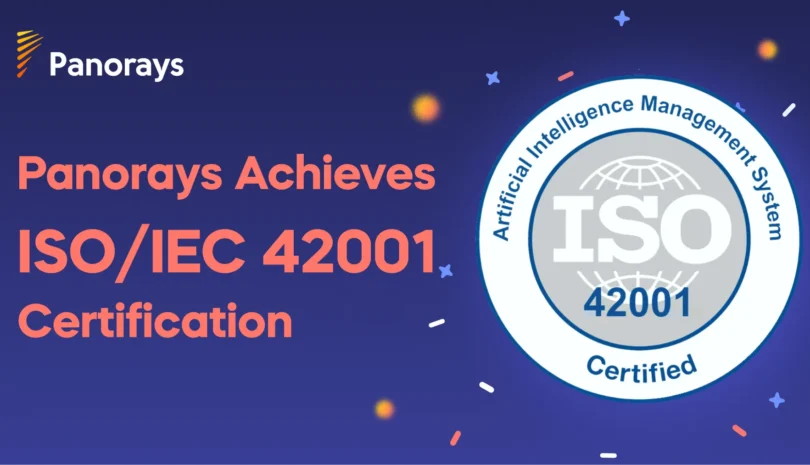SaaS adoption has transformed how businesses operate, enabling teams to move faster, collaborate seamlessly, and scale without the limitations of traditional IT infrastructure. But as organizations embrace hundreds, or even thousands, of cloud applications, security teams are facing a growing challenge: managing the hidden risks behind this digital sprawl. Many departments now deploy SaaS tools independently, often without IT approval or oversight, creating blind spots that expose sensitive data and expand the attack surface. From compliance gaps to misconfigured integrations, the risks multiply with every unmonitored app.
For IT security leaders, understanding why SaaS sprawl occurs and how it undermines visibility is critical to regaining control. Effective third-party SaaS risk management isn’t just about tracking applications, it’s about building the right processes, technologies, and collaboration models to ensure flexibility never comes at the expense of security.
What Is SaaS Sprawl?
SaaS sprawl is the uncontrolled growth of software-as-a-service applications across an organization without centralized oversight from IT or security teams. As cloud adoption accelerates, departments and employees can easily subscribe to tools that solve immediate needs, often bypassing procurement or security review processes. The result is a fragmented and difficult-to-manage application ecosystem.
Research shows the number of SaaS applications used by the average enterprise has tripled in the past five years, often reaching into the hundreds or even thousands. Many of these tools overlap in functionality, remain unmonitored, or continue to store data long after they’ve been abandoned. Common examples include shadow IT apps introduced without approval, duplicate tools adopted by separate departments, and inactive accounts that still have access to company systems. Left unchecked, SaaS sprawl creates unnecessary complexity, weakens security, and reduces visibility across the organization’s digital environment.
Why SaaS Risk Management Is a Growing Concern for IT Security Teams
As organizations expand their use of cloud-based software, the security implications grow just as quickly. Every new SaaS application represents another potential entry point for attackers, increasing the size and complexity of the organization’s attack surface. When apps are deployed without proper vetting or ongoing oversight, vulnerabilities, misconfigurations, and unauthorized data sharing can go unnoticed.
SaaS also introduces significant data privacy and compliance challenges. Regulations such as GDPR, HIPAA, and DORA require organizations to maintain strict control over how data is stored, processed, and shared; an increasingly difficult task when sensitive information flows through dozens of third-party platforms.
Beyond security and compliance, SaaS adoption creates operational dependencies. If a key vendor experiences downtime, data loss, or a breach, it can disrupt critical business functions. Managing these risks effectively requires continuous visibility, standardized controls, and a structured approach to third-party SaaS oversight.
Challenges Security Teams Face in Managing SaaS Risk
Managing SaaS risk is far more complex than simply tracking applications. Security teams must contend with a sprawling network of vendors, evolving regulations, and constant technological change. Each new SaaS tool adds layers of visibility, compliance, and dependency challenges that are difficult to manage at scale. The following factors highlight why even well-resourced organizations struggle to maintain consistent SaaS governance and protection across their digital ecosystems.
Saas Apps Can Lack Visibility
Departments often adopt SaaS applications without involving IT or security, a practice commonly referred to as shadow IT. These unsanctioned tools operate outside approved systems, making it difficult to track data flows or ensure proper configurations. Disconnected systems prevent centralized monitoring, and without visibility into what’s being used or where sensitive data resides, organizations face increased risk of breaches, data leakage, and compliance violations that go unnoticed until it’s too late.
Security Teams Have Limited Resources
Many security teams are small compared to the number of SaaS vendors they must manage. Performing manual risk assessments, reviewing questionnaires, and tracking compliance documentation across hundreds of providers can be overwhelming. Without automation or clear prioritization, valuable time is spent on repetitive tasks instead of addressing the highest-risk vendors. This imbalance leaves critical vulnerabilities unmitigated and risk oversight inconsistent.
Complex SaaS Vendor Ecosystems
SaaS ecosystems rarely exist in isolation. Each platform may rely on multiple fourth-party vendors, including hosting providers, payment gateways, and integrated APIs. These interconnections expand the potential attack surface and introduce indirect risks that are often invisible to the primary organization. Managing these dependencies requires deeper visibility into vendor relationships and ongoing monitoring of their security posture to prevent cascading vulnerabilities throughout the supply chain.
Compliance Burdens
Security teams must meet the demands of multiple regulatory frameworks that require evidence of third-party controls and ongoing risk management. Demonstrating compliance across GDPR, SOC 2, ISO 27001, and other standards can be time-consuming and resource-intensive. Point-in-time audits no longer reflect the continuous nature of SaaS risk, leaving organizations exposed between audit cycles. Continuous monitoring and standardized assessments are becoming essential to maintain compliance and resilience in a fast-evolving threat landscape.
Consequences of Poor SaaS Risk Management
When SaaS risk management is neglected, the consequences can be severe and far-reaching. Misconfigured SaaS applications are one of the most common causes of data breaches, often exposing sensitive customer or corporate information to unauthorized users. Without proper oversight, organizations may never detect these weaknesses until an incident occurs.
Regulatory exposure is another major risk. Data protection laws such as GDPR, HIPAA, and DORA impose strict requirements for managing third-party vendors. Failure to secure or properly monitor SaaS applications that handle personal or financial data can result in substantial fines and mandatory reporting obligations, damaging both finances and reputation.
Operational continuity also suffers when a critical SaaS provider experiences downtime or a security breach. If the affected service underpins essential business operations, such as communication, accounting, or data storage, organizations can face costly disruptions and loss of productivity.
Finally, repeated security incidents erode customer trust. Clients expect companies to safeguard their information and maintain consistent service reliability. A breach involving a third-party SaaS platform can permanently undermine that confidence, affecting brand reputation and future business opportunities. Effective SaaS risk management is therefore not just a compliance exercise, it’s a strategic imperative for maintaining resilience and trust.
Best Practices for Managing Third-Party SaaS Risk
Managing SaaS risk effectively requires a structured, proactive approach that goes beyond manual tracking or one-time assessments. Security teams must gain visibility into all SaaS applications, understand their risk levels, and apply consistent oversight across the vendor lifecycle. The following best practices outline key steps to help organizations strengthen control, reduce exposure, and ensure that SaaS adoption supports both agility and security objectives.
Centralized SaaS Inventory
Establishing a centralized SaaS inventory is the foundation of effective risk management. Use tools like Cloud Access Security Brokers (CASBs) or SaaS Security Posture Management (SSPM) solutions to automatically discover all applications in use across departments. This visibility enables IT and security teams to identify shadow IT, assess usage trends, and maintain accurate oversight.
Risk-Based Vendor Prioritization
Not all SaaS applications present the same level of risk. Prioritize vendors based on the sensitivity of the data they handle, the level of access granted, and their role in core business operations. Focusing resources on high-risk apps allows security teams to manage exposure efficiently and ensure that critical systems receive the attention they require.
Continuous Risk Monitoring
Static, point-in-time vendor assessments no longer provide sufficient protection. Continuous risk monitoring tools automatically detect configuration changes, new vulnerabilities, or security incidents affecting SaaS vendors. By tracking these developments in real time, organizations can respond faster, mitigate emerging threats, and maintain compliance with ongoing regulatory obligations.
Automation & AI Tools
Automation and AI-powered technologies streamline key SaaS risk management processes. These tools can score vendors based on real-time data, automate risk questionnaires, and generate up-to-date reports for audits or compliance. Solutions like Panorays leverage automation and machine learning to continuously assess vendor security posture, flag emerging risks, and simplify reporting. By reducing manual effort, security teams can scale oversight, improve accuracy, and focus their attention on strategic initiatives rather than repetitive administrative tasks.
Cross-Departmental Collaboratios
SaaS risk management is not solely an IT responsibility. Procurement, legal, finance, and business units must work together to ensure new applications meet security and compliance standards before adoption. Building collaborative workflows fosters accountability and helps align SaaS procurement with broader risk management policies, promoting a culture of shared responsibility across the organization.
Role of Technology in Containing the SaaS Risk Sprawl
Technology plays a central role in helping security teams regain control over SaaS environments that have grown too large to manage manually. Cloud Access Security Brokers (CASBs) are a critical first step, providing visibility into shadow IT by identifying unauthorized apps and monitoring user activity across cloud services. They enable organizations to detect, block, or enforce policies on unsanctioned tools before they become security liabilities.
SaaS Security Posture Management (SSPM) platforms take visibility further by continuously monitoring SaaS configurations, permissions, and access controls. These tools help ensure that settings align with security policies and compliance requirements, minimizing the likelihood of misconfigurations and data exposure.
Finally, Third-Party Risk Management (TPRM) platforms automate vendor onboarding, risk assessments, and continuous monitoring. By integrating these technologies, organizations can build a unified SaaS risk management strategy that replaces fragmented processes with continuous visibility, real-time alerts, and data-driven decision-making.
The Future of SaaS Risk Management
SaaS risk management is evolving rapidly as organizations shift from reactive oversight to proactive, intelligence-driven security models. One major development is the move toward continuous controls monitoring (CCM), which enables real-time visibility into vendor performance, configuration changes, and compliance gaps. This approach helps security teams identify and mitigate risks before they escalate into incidents.
Artificial intelligence is also transforming how SaaS vendors are evaluated. AI-powered risk scoring analyzes data from multiple sources, such as threat intelligence feeds, incident reports, and compliance records, to provide more accurate, dynamic insights into vendor security posture.
In parallel, SaaS risk is becoming an integral part of enterprise security frameworks like Zero Trust. By embedding SaaS oversight into identity, access, and network controls, organizations can enforce consistent policies across all applications. The result is a more adaptive and resilient risk management strategy that aligns security with continuous innovation.
From Chaos to Control: Effective SaaS Risk Management
SaaS sprawl has reshaped how organizations operate and how they face risk. The rapid, decentralized adoption of cloud applications has introduced visibility gaps, compliance challenges, and new avenues for cyberattacks. Without a structured SaaS risk management strategy, even the most advanced security teams can struggle to track vendors, enforce controls, and maintain regulatory compliance.
To regain control, IT and security leaders must prioritize visibility, automation, and continuous monitoring. Investing in tools that provide unified oversight across SaaS ecosystems is essential for reducing complexity and ensuring accountability.
Panorays enables organizations to move from fragmented oversight to a centralized, proactive approach. Its platform automates vendor assessments, continuously monitors third-party risk, and delivers actionable insights into SaaS security performance, all without slowing business operations.
Ready to turn SaaS chaos into control? Book a demo with Panorays and see how automated SaaS risk management can transform your security strategy.
SaaS Risk Management FAQs
-
SaaS risk management ensures organizations maintain control over the growing number of third-party cloud applications in use. Without structured oversight, security gaps, compliance violations, and data breaches can occur. Effective SaaS risk management helps protect sensitive information, maintain regulatory compliance, and safeguard business continuity.
-
Common risks include misconfigured settings, excessive user permissions, weak authentication controls, and unmonitored integrations with other systems. These vulnerabilities can lead to unauthorized data access or account compromise if left unchecked.
-
Regulations require organizations to verify that third-party SaaS vendors meet security and data protection standards. This means maintaining documentation, conducting due diligence, and continuously monitoring vendor compliance to avoid fines or legal exposure.
-
SaaS risk management complements IT security by extending visibility and control to third-party environments. Platforms like Panorays unify vendor risk data, automate assessments, and align SaaS oversight with enterprise-wide security policies, enabling a consistent and proactive defense strategy.



